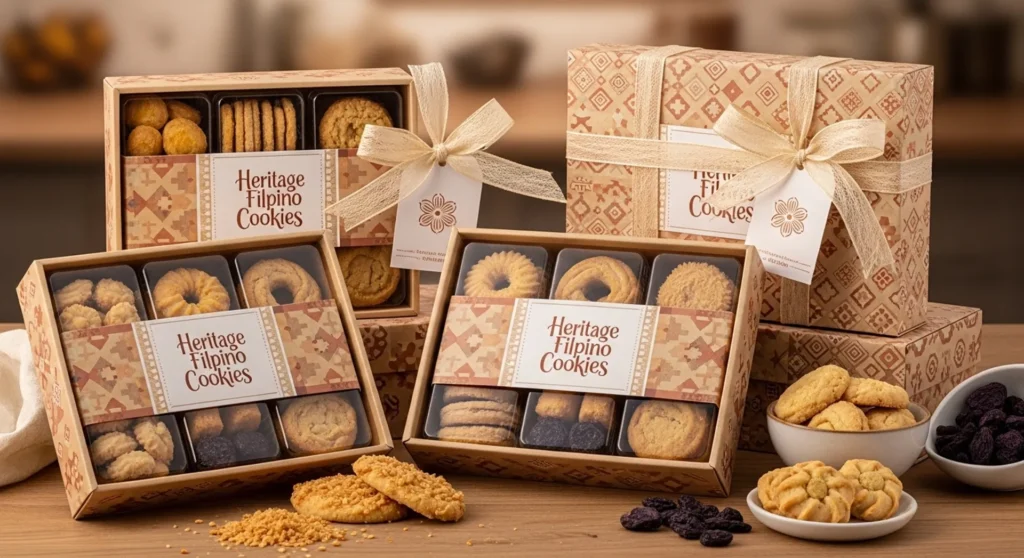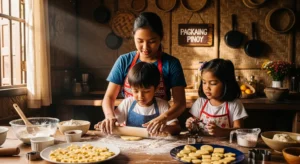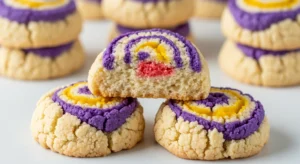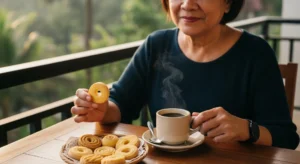Filipino food culture has always been rooted in family, tradition, and storytelling. While many people associate the Philippines with iconic desserts such as leche flan and halo-halo, the country’s cookie heritage is equally rich. Simple, humble, and often made with locally sourced ingredients, these Filipino heritage cookies have stood the test of time in homes, bakeries, and fiestas across the archipelago. Now, in 2025, they are making a comeback — remixed with modern flavors and techniques that capture today’s love for cultural authenticity and global fusion.
The Importance of Heritage Baking
Heritage baking is more than just following a recipe. It is an act of preserving identity and honoring the flavors that shaped generations. According to the National Commission for Culture and the Arts (NCCA), food heritage plays a critical role in safeguarding Filipino culture. By revisiting cookies such as roscas, paciencia, puto seko, and gorgoria, families are not just baking — they are keeping traditions alive in a modern world that often forgets them.
Food trends today increasingly highlight cultural authenticity. The New York Times Food Trends Report noted that global consumers are seeking desserts with stories, roots, and connections to heritage. Filipino cookies perfectly align with this shift, offering bakers a chance to combine nostalgia with creative innovation.
Classic Filipino Heritage Cookies
Roscas
Originating from Leyte, roscas are “ring-shaped” cookies traditionally flavored with anise. Made with flour, eggs, and lard, they are firm and crumbly—perfect with coffee or tea. These cookies were often baked during fiestas and holidays, representing abundance and community. Today, bakers experiment by dipping roscas in chocolate, glazing them with caramel, or even infusing them with matcha and espresso powder. Their versatility makes them a canvas for both heritage and modern flavors.
Paciencia
Paciencia cookies are light, airy, meringue-like treats named after the Spanish word for patience. They require careful whisking of egg whites and sugar, demanding time and precision. Traditionally enjoyed as merienda with coffee or hot chocolate, paciencia are now being remixed with calamansi zest for a citrusy punch, or pandan extract for a Southeast Asian twist. Some modern recipes even add cocoa powder, creating a Filipino spin on chocolate meringue bites.
Puto Seko
Puto seko, also spelled “puto seco,” translates to “dry rice cookie.” Made from rice flour, sugar, and coconut milk, they are dry, crumbly, and melt-in-the-mouth. Children often remember these cookies wrapped in plastic packets at local sari-sari stores. In 2025, bakers are remixing them with swirls of ube, strawberry, and mango, turning them into colorful treats that appeal to both nostalgia and social media aesthetics. Their naturally gluten-free base also makes them popular among health-conscious bakers.
Gorgoria
Gorgoria, a lesser-known but beloved cookie, is traditionally fried and glazed with sugar syrup until golden and glossy. Its crisp crunch and shiny exterior make it an irresistible festival snack. However, modern bakers are exploring baked versions to reduce oil, while experimenting with salted caramel, vanilla glazes, or even chocolate coatings. This reinvention reflects the global shift toward lighter yet flavorful desserts without losing authenticity.
Modern Twists and Flavor Remixes
One of the most exciting parts of reintroducing heritage cookies is adding modern flavors that reflect today’s palates. Here are some popular adaptations:
- Roscas + Dark Chocolate Ganache: Adds richness and enhances the anise flavor.
- Paciencia + Calamansi Glaze: A refreshing citrus twist that balances sweetness.
- Puto Seko + Ube Marble: A colorful and distinctly Filipino update.
- Gorgoria + Salted Caramel: Combines crunch with buttery sweetness.
These remixes not only modernize tradition but also make the cookies more accessible for today’s food trends like authentic and artisanal desserts.
Baking Heritage Cookies With Kids
One of the most rewarding aspects of heritage cookies is that they are family-friendly. Children can actively participate in shaping dough, piping batter, or sprinkling toppings. Here’s how each cookie can become a child-safe activity:
- Roscas: Kids can form rings by hand, making creative shapes.
- Paciencia: Teach patience as they carefully pipe small dollops.
- Puto Seko: Let kids mix food color into the dough for marble patterns.
- Gorgoria: Kids can help drizzle glazes or sprinkles after baking.
Involving children in heritage baking not only builds skills but also strengthens family bonds. For more tips on safe and fun activities, see our guide on Baking With Kids.
Heritage Cookies in the Global Dessert Scene
Filipino cookies are not just trending locally — they’re beginning to capture international attention. With the growing popularity of global flavors, Filipino desserts are appearing in bakeries from Los Angeles to London. According to Euromonitor International, consumer demand for international baked goods is on the rise, driven by multicultural communities and social media exposure. This global spotlight creates opportunities for Filipino bakers and home cooks to share heritage recipes with the world.
Cookie Kits and Gift Packaging
Remixed heritage cookies are also ideal for cookie gift packaging and DIY kits. Families can package cookies in eco-friendly boxes, glass jars, or themed containers with heritage-inspired designs. Including recipe cards and QR codes linking to cultural stories or baking tutorials makes the experience both educational and engaging.
For example, a “Heritage Cookie Box” could include: ube puto seko, chocolate-dipped roscas, citrus-glazed paciencia, and caramel gorgoria. These make excellent gifts for holidays, birthdays, or cultural celebrations.
Perfect Pairings With Modern Drinks
To make heritage cookies even more appealing, pair them with contemporary beverages:
- Roscas: Perfect with strong Philippine barako coffee.
- Paciencia: Light enough to enjoy with herbal teas or milk tea.
- Puto Seko: Great with fresh fruit juices or iced buko (coconut water).
- Gorgoria: Sweet and crunchy alongside cappuccinos or lattes.
Preserving Culture Through Baking
These cookies are more than snacks — they are edible history lessons. By baking roscas, paciencia, puto seko, and gorgoria, families are not only indulging in sweet flavors but also honoring cultural legacies. Each recipe teaches patience, creativity, and pride in Filipino identity. Passing down these cookies ensures younger generations stay connected to their roots while adapting traditions for modern tastes.
Food anthropologists often describe heritage recipes as “living traditions.” They evolve with each generation but never lose their essence. By remaking Filipino cookies with new flavors, today’s bakers show how culture can be both preserved and innovated at the same time.
Final Thoughts
The revival of Filipino heritage cookies in 2025 proves that authenticity never goes out of style. Roscas, paciencia, puto seko, and gorgoria are more than recipes — they are cultural touchstones that deserve to be celebrated. By remixing them with modern flavors, packaging them creatively, and sharing them with family, these cookies can thrive for generations to come. Whether you bake them at home with your kids, gift them in cookie boxes, or discover them at a café abroad, heritage cookies are here to stay.
For more inspiration, check out our posts on Cookie Recipes, Trending Desserts, and Dessert Ideas.




